What is a variable frequency drive (VFD)?
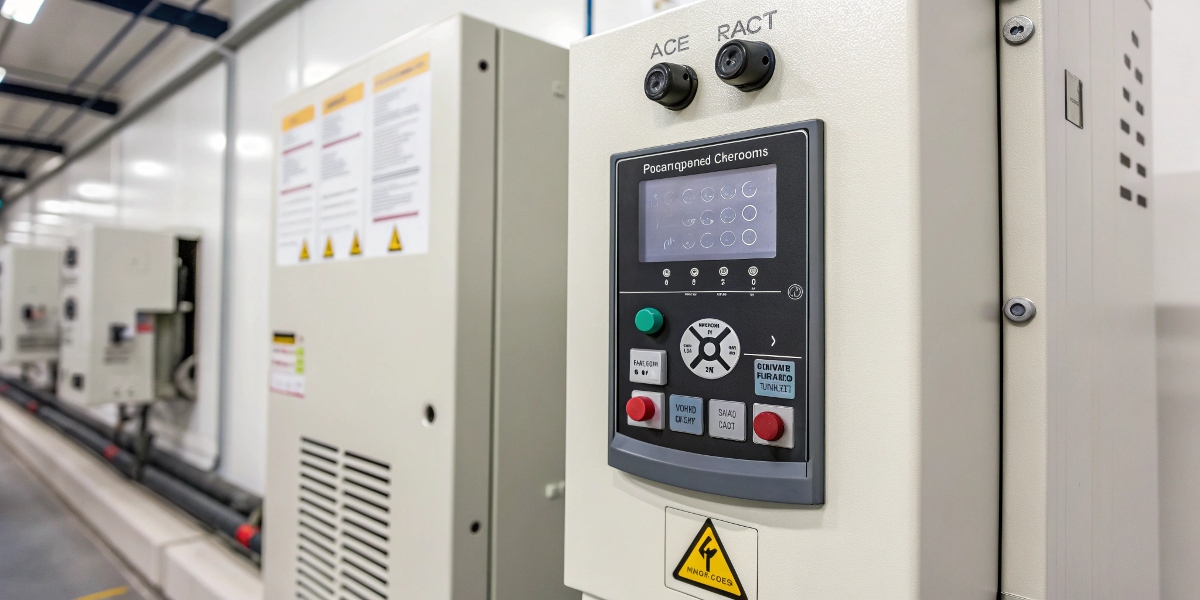
Are you confused by what a Variable Frequency Drive does? You see the term everywhere, but the technical explanations often create more questions than answers, costing you time.
A Variable Frequency Drive, or VFD, is an electronic device that controls the speed of an AC electric motor. It does this by changing the frequency and voltage of the power supplied to the motor, allowing for precise control, soft starts, and significant energy savings.
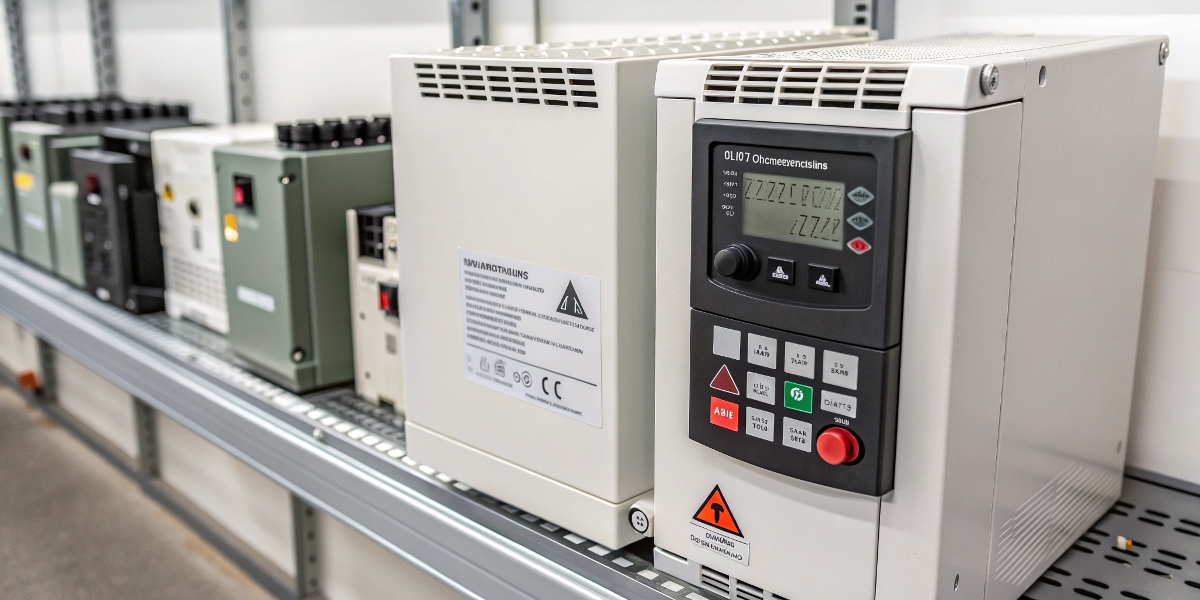
I've spent my entire career in the power industry, from my early days as an engineer to founding my own company, YOGU Electric. I've seen technologies come and go. But VFDs are not just another piece of hardware. They have fundamentally changed how we manage motors and machines.
They are more than just speed controllers; they are smart devices that can protect your equipment, save you money, and even tell you when a motor is about to fail. Let's dig deeper into what this means for you and your business.
What is a variable frequency drive used for?
Your motors are running at full speed, even when they don't need to. This wastes a huge amount of energy and puts constant stress on your mechanical parts.
A VFD is used to match a motor's speed and torque to the actual demands of the job. This is essential for applications like pumps, fans, conveyors, and HVAC systems1, where full power isn't always needed. This precise control saves energy and extends equipment life.
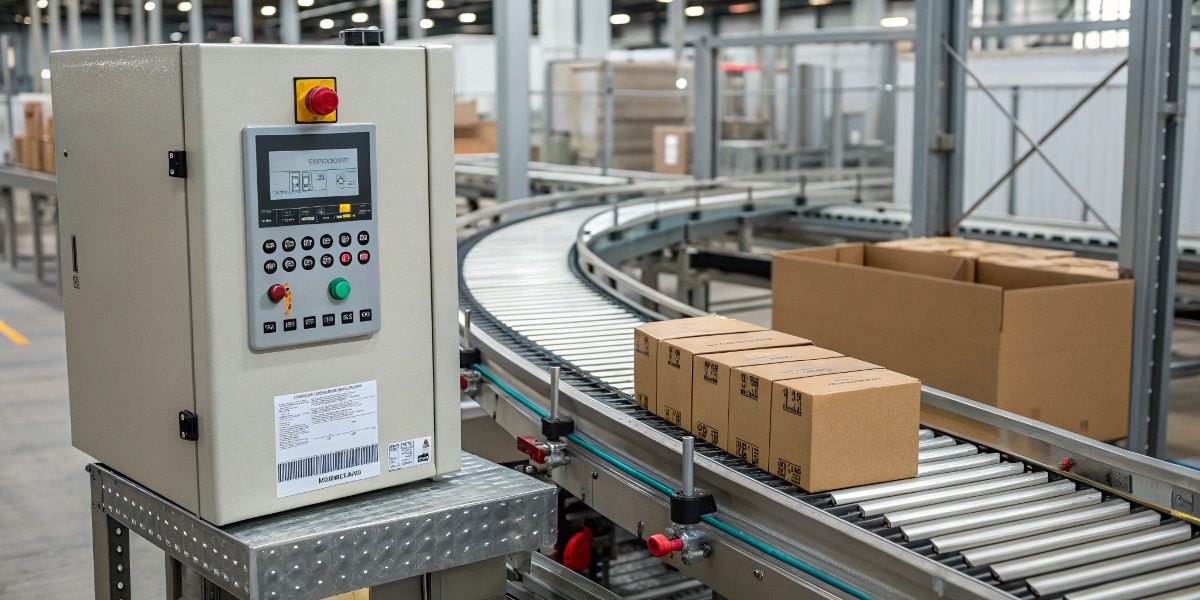
When I first started, many systems used simple on/off controls. A pump was either at 100% speed or off. This crude method caused a lot of problems. For example, in pumping systems, starting a motor at full blast can cause a "water hammer" effect—a damaging pressure surge that shocks the pipes and valves. With a VFD, you can gently ramp up the speed. This S-curve acceleration2 is like smoothly pressing the gas pedal in a car instead of flooring it. It eliminates the shock. The same principle applies to conveyors, preventing belt slip and product damage, or to fans, reducing noise and mechanical strain. It's not just about speed control; it's about intelligent machine management.
Key Applications and Benefits:
| Application | VFD Benefit | Why It Matters for You |
|---|---|---|
| Pumps/Fans | Prevents water hammer/pressure surges | Reduces maintenance, extends pipe/valve life |
| Conveyors | Smooth start/stop, jerk limitation | Less product spillage, less belt wear |
| HVAC Systems | Quieter operation, less vibration | Improved comfort, longer component lifespan |
| All Machines | Avoids resonant frequencies3 | Prevents destructive vibrations, fewer breakdowns |
This ability to manage resonance and fatigue across the entire machine is a game-changer. It means fewer callbacks, longer-lasting components, and more reliable operations for your customers.
What is a VFD for dummies?
Technical jargon about VFDs can be overwhelming. This complexity makes it hard to feel confident in your purchasing decisions or explain the value to non-technical stakeholders.
Think of a VFD as a "gas pedal" or a "dimmer switch" for an electric motor. Just as a dimmer controls a light bulb's brightness, a VFD controls a motor's speed. It takes the fixed power from the wall and converts it into a variable power supply for the motor.
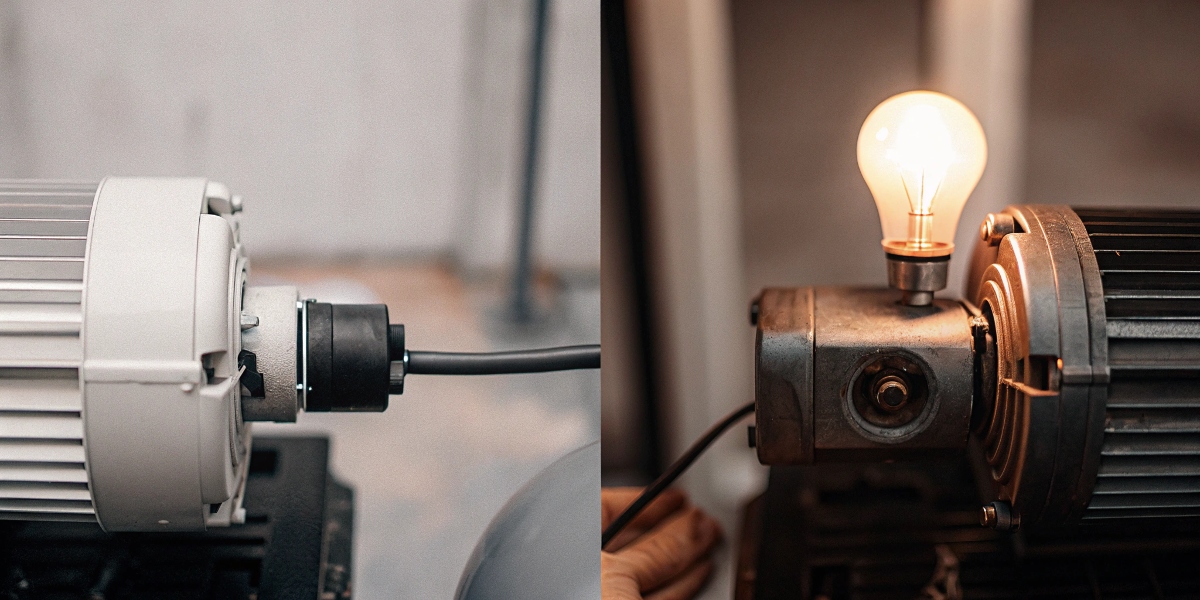
I often use this analogy when training new staff. Everyone understands a dimmer switch. You're not changing the light bulb; you're changing the power going to it. A VFD does the same for a motor. Inside the box, it performs a simple, three-step dance with electricity. First, it takes the standard AC power from your grid and converts it into DC power.
It's like creating a smooth reservoir of energy. Then, the VFD's "brain"—a set of fast-switching transistors—chops up that DC power and rebuilds it into a new AC power signal. But this new signal is special. The VFD can change its frequency, and in an AC motor, frequency directly controls speed. More frequency (Hertz) means more speed (RPM). This process not only controls speed but also helps "shape" the electricity. A modern VFD cleans up the power it draws, making it friendlier to your electrical grid and reducing stress on transformers. So, it's not just a gas pedal; it's a smart fuel injector, too.
What is the difference between a variable speed drive and a VFD?
You hear the terms VSD and VFD used as if they mean the same thing. This confusion can lead to sourcing the wrong technology or misunderstanding what you're actually buying.
A Variable Speed Drive (VSD) is a broad category for any device that changes a motor's speed. A Variable Frequency Drive (VFD) is a specific, modern, electronic type of VSD. Essentially, all VFDs are VSDs, but not all VSDs are VFDs.
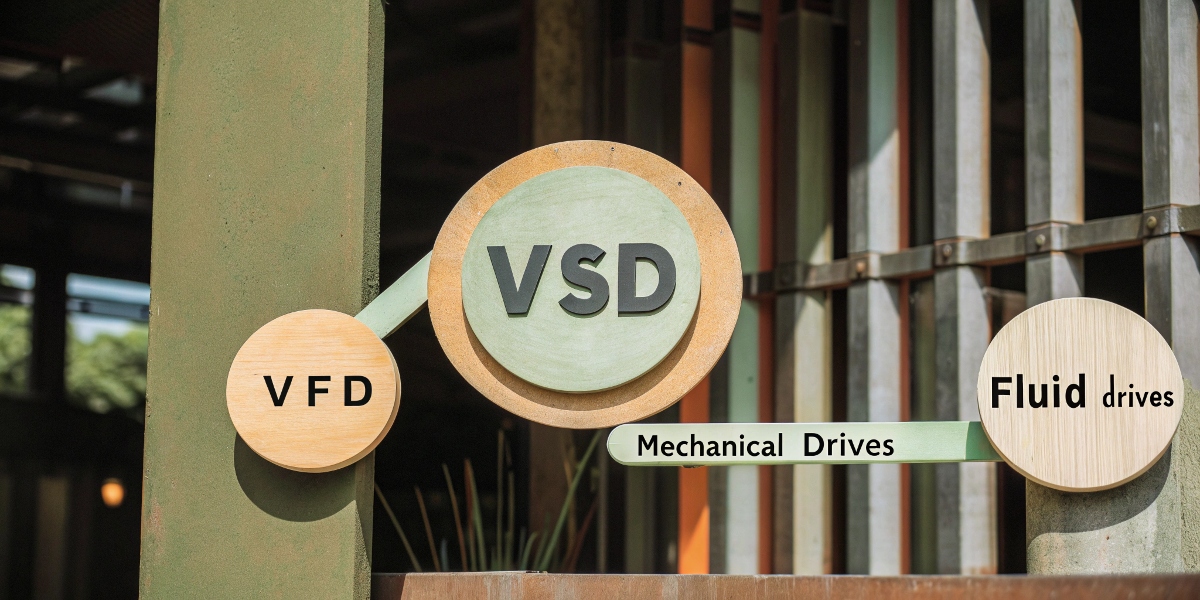
In my early factory days, we used older types of VSDs. These were often big, clunky mechanical systems. For example, we used adjustable belts and pulleys to change speeds. They worked, but they were inefficient, required a lot of maintenance, and offered very limited control.
The key takeaway here is the method of control. VFDs are part of the VSD family, but they are the most advanced members. They have no moving parts to wear out and offer incredibly precise, electronic control that older systems just can't match.
Understanding Drive Types
| Drive Type | Category | How it Works | Key Drawback |
|---|---|---|---|
| Belt and Pulley Drive | Mechanical VSD | Physically changing pulley diameters | Inefficient, high maintenance |
| Fluid Coupling | Hydraulic VSD | Using fluid to transfer torque (slippage) | Wasted energy as heat, messy |
| Variable Frequency Drive | Electronic VSD | Electronically alters power frequency | Higher initial cost (but savings pay it back) |
As a purchasing manager, it's crucial to know that when someone specifies a modern, efficient, and intelligent speed control solution, they mean a VFD. It's the standard for performance and savings.
What are the advantages of VFD?
You know VFDs save energy. But is that the only reason to justify their cost? If you only focus on energy, you're missing the hidden benefits that provide a massive competitive advantage.
The biggest advantages of a VFD are massive energy savings4, reduced mechanical wear5 on equipment, and precise process control. Beyond that, modern VFDs act as built-in diagnostic tools6, simplify machine safety compliance, and improve power grid stability7.
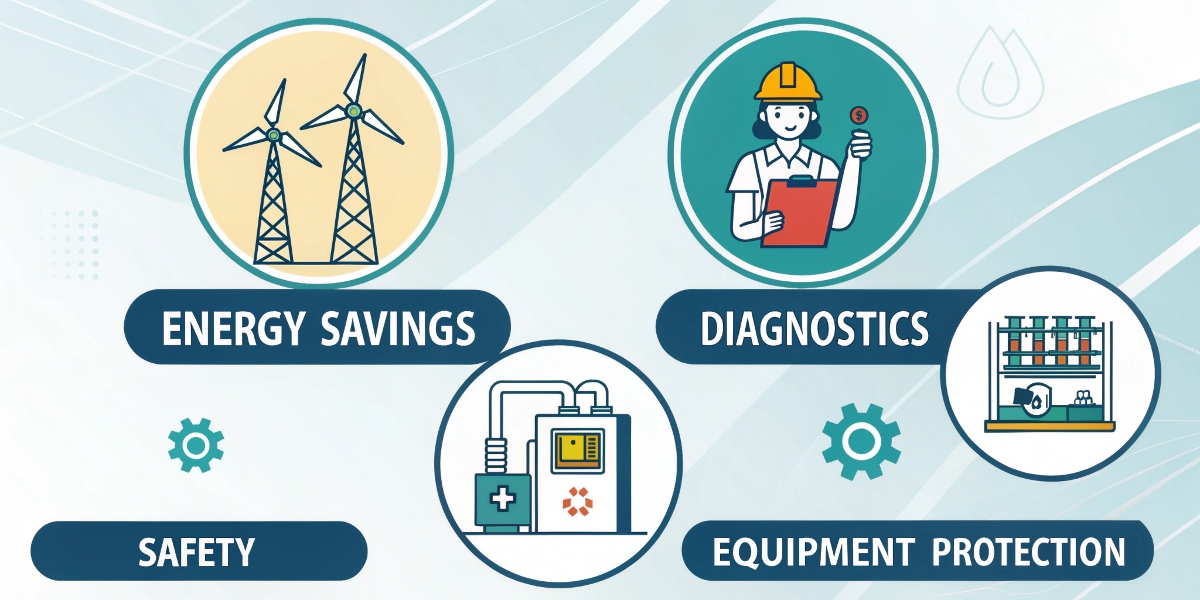
The most successful customers I've worked with look beyond the obvious energy savings. They see the VFD as a multi-tool for their entire operation. Let me break down some of the advanced advantages that a savvy purchasing manager like you should know about.
Built-in Health Monitoring
A VFD is constantly sampling the motor's current thousands of times per second. It's already collecting a huge amount of data. Smart VFDs use this data to perform what's called "motor current signature analysis8." Without any extra sensors, the drive can infer problems like bearing wear, rotor-bar issues, or even pump cavitation.
I've seen clients use this to shift from fixing broken machines to predicting failures before they happen. This turns a simple component purchase into a strategy for maximizing uptime and delivering reliability as a service.
Advanced Safety Compliance
In the past, making a machine safe required a lot of external contactors, relays, and complex wiring for functions like Safe Torque Off (STO)9. Modern VFDs have these safety functions built right in. They are certified to international safety standards (like IEC 61800-5-2). For your company, this means you can build safer panels with fewer components. It saves on hardware costs, reduces wiring time and potential errors, results in a smaller enclosure, and makes safety certification much simpler.
Power Grid Stability
The DC link inside a VFD acts as an energy buffer10. This gives it a unique ability to "ride through" brief power sags that would trip other equipment. Features like "flying start" allow a VFD to smoothly reconnect to a motor that is already spinning. This stability is critical for operations that rely on backup generators or exist in areas with unstable power, creating a more resilient and reliable system with minimal extra hardware.
Conclusion
A VFD is far more than a simple speed controller. It's a smart tool that drives efficiency, protects machinery, provides diagnostics, and enhances safety, making it a cornerstone of modern industrial operations.
-
Explore the role of VFDs in enhancing comfort and energy efficiency in HVAC systems. ↩
-
Understand how S-curve acceleration improves the operation of motors and reduces stress. ↩
-
Understand the significance of managing resonant frequencies in industrial machinery. ↩
-
Learn how VFDs can significantly reduce energy costs in industrial settings. ↩
-
Find out how VFDs extend the lifespan of machinery by minimizing wear and tear. ↩
-
Discover the advanced diagnostic capabilities of VFDs that enhance operational reliability. ↩
-
Learn how VFDs contribute to a more stable and resilient power grid. ↩
-
Find out how this analysis can predict motor failures and improve maintenance strategies. ↩
-
Understand the importance of safety features in VFDs for industrial applications. ↩
-
Explore how the energy buffer enhances the performance and reliability of VFDs. ↩

